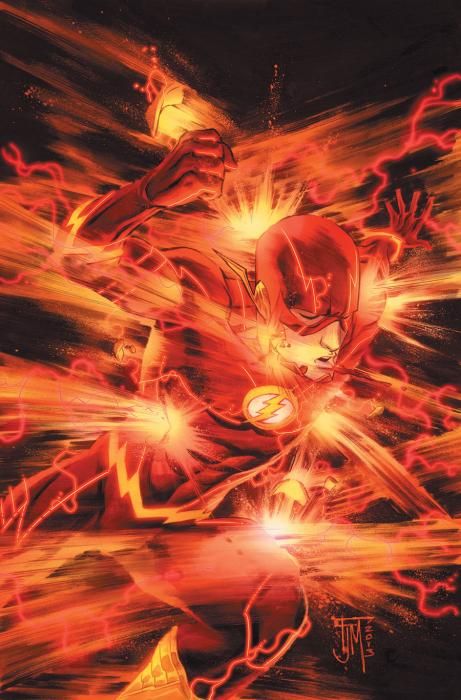After a year and a half's worth of stories that were all tightly tied together, it's nice to see Francis Manapul and Brian Buccellato begin to move "The Flash" into some new territory. In doing so, "The Flash" #20 feels like a book that's not only a little more alive, but also a good point to jump on for a new reader.
While there still is some follow-through from what happened before (namely what the victims of the Revenge-Flash all have in common), this is still a good break point. Barry Allen's been given a new position at the police force (now that his civilian identity is no longer MIA-presumed-dead), his personal life with Patty is entering a new phase, and there's a new villain gunning for Central City. More importantly, "The Flash" #20 feels energetic. There's no more need to keep checking in on people stuck in the Speed Force, or having to note that the Flash's real identity is thought to be dead. This feels straightforward and to the point, and that's much appreciated.
Unsurprisingly, Manapul's art is beautiful as ever. The image of the Flash running towards the reader on page 4 is just enchanting; it's a pose that feels strong, the slight blurs do a good job of evoking the feeling of speed, and it doesn't look stiff or forced. Manapul and Buccellato's ability to bring that fast nature to the page has always been this book's strong point; Barry whipping around the records room looks sharp, and the image of the Flash stopping a runaway subway train works not just because there are a bunch of afterimages of the Flash running, but rather because of how well they all work together. Creating a wind tunnel sounds about as uninteresting as they come, but Manapul and Buccellato turn that idea on its head.
Now that "The Flash" #20 has shaken free of the sluggish nature that has dogged the title for a while, I'm hoping for a climb into fun from this point on. It's a good first chapter in this six-part story, and I want to see it keep picking up the pace. So far, so good.

